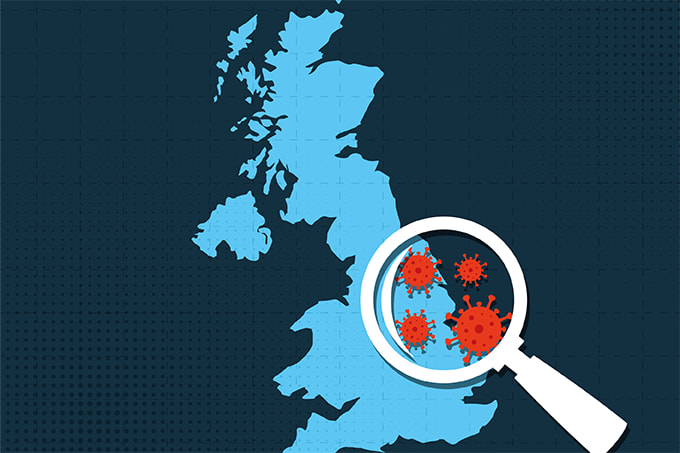
It’s an inevitable public health conundrum: while we recognize the importance of being prepared for future pandemics, it’s almost impossible to secure funding for a threat that can’t yet be seen. Even the wealthiest countries struggle to allocate sufficient resources for pandemic preparedness.
However, a new model from the UK government offers a template that could make pandemic preparedness more palatable and feasible – including in low- and middle-income countries. The idea is simple: establish testing centers with affordable, scalable technologies and trained personnel to address current health goals, but design them to be flexible enough to pivot to pandemic response when needed.
In the recently announced UK approach, the government’s health system is setting up infrastructure in 30 or so hospitals to enable sequencing-based metagenomic testing of respiratory samples. This cost-effective method allows clinical labs to identify a broad range of respiratory pathogens, including viruses, bacteria, and fungi. Because metagenomic sequencing makes it possible to spot novel pathogens, it can be adapted easily in the event of an emerging outbreak or pandemic. By setting up the infrastructure now, the UK enjoys two benefits: addressing a real clinical need today, and being ready for shifting public health needs in the future.
For me, this isn’t just good policy; it’s a deeply personal issue. I’m originally from Sri Lanka and, during the COVID-19 pandemic, I was appalled to learn that Sri Lankan scientists were stuck with a testing strategy that could not scale to meet the country’s needs. They scrambled to set up new testing infrastructure when the pandemic hit, and wound up with a commonly used sequencing platform that was unsuitable for the situation. With this approach, each sample cost around $400 to run, limiting their capacity to about 100 samples per month – nowhere near enough to keep the population safe.
When I found out about this, I helped scientists in Sri Lanka access a sequencing platform that was a better fit for their needs: portable, scalable, easy to use, and more cost-effective. This brought their testing costs down to $5 per sample, immediately increasing their capacity to 96 samples per day and allowing public health officials to implement a more effective and comprehensive testing strategy. The country secured funding from the World Health Organization to set up more labs with these nanopore-based sequencers, creating a network of facilities and scientists for current and future health uses. As the need for COVID-19 testing waned, labs shifted their sequencing pipelines to dengue fever and other relevant applications.

When there are existing pipelines, trained staff members, and communication channels in place, it is much easier to pivot that entire system to a new target – such as in the case of a pandemic – than it would be to try to set up everything from scratch when a crisis occurs. This is why I’m working tirelessly to ensure that all countries, including those with scant resources, have the tools and talent required to enable this kind of approach for pandemic preparedness.
In terms of technology, sequencing platforms are ideal for this kind of work. Unlike standard molecular testing platforms, they don’t need pathogen-specific primers, allowing for immediate employment to detect emerging threats. Their flexibility allows for use with virtually any pathogen-related application, making them broadly applicable whether a pandemic is raging or not.
But as we recently saw in Sri Lanka, not all sequencing technologies are a fit for infectious disease testing, or for pandemic use when capacity is pushed to the limit. For this reason, laboratory teams should focus not just on instrument costs but also on per-sample costs and capacity as they evaluate technologies. Another factor to consider is microbial testing, particularly for novel pathogens, which often benefit from the ability to produce a complete genome assembly. Commonly used short-read sequencers may be less useful than long-read sequencers, which can span entire microbial genomes in a single read to provide the most complete and accurate view.
In addition, instrument portability and speed will be important, particularly in low- and middle-income countries. Being able to move a sequencer easily from lab to lab can help maximize the investment in a sequencing tool, and offers an alternative to centralized systems that require all samples to be sent to a single location. Instead, public health teams can set up networks of centres in a decentralized approach that de-risks potential failures or staff shortages in an emergency. Having an easily portable sequencer also allows for in field use, providing scientists with mobile labs to test people in affected areas rapidly with optimal outbreak response.
While we can’t determine what the future holds, it is safe to say that there will be more pandemics – potentially even worse than the last one. Now that we have recent experience of dealing with these threats, we know how important it is to have testing resources at the ready, along with trained staff and validated data analysis pipelines.
Each country has different healthcare systems, resources, and political appetite for the implementation of pandemic preparedness infrastructure. But if we begin by fitting out labs with flexible, affordable sequencing technologies for current use, we should expect to benefit from a global network ready to address the next major health crisis.




